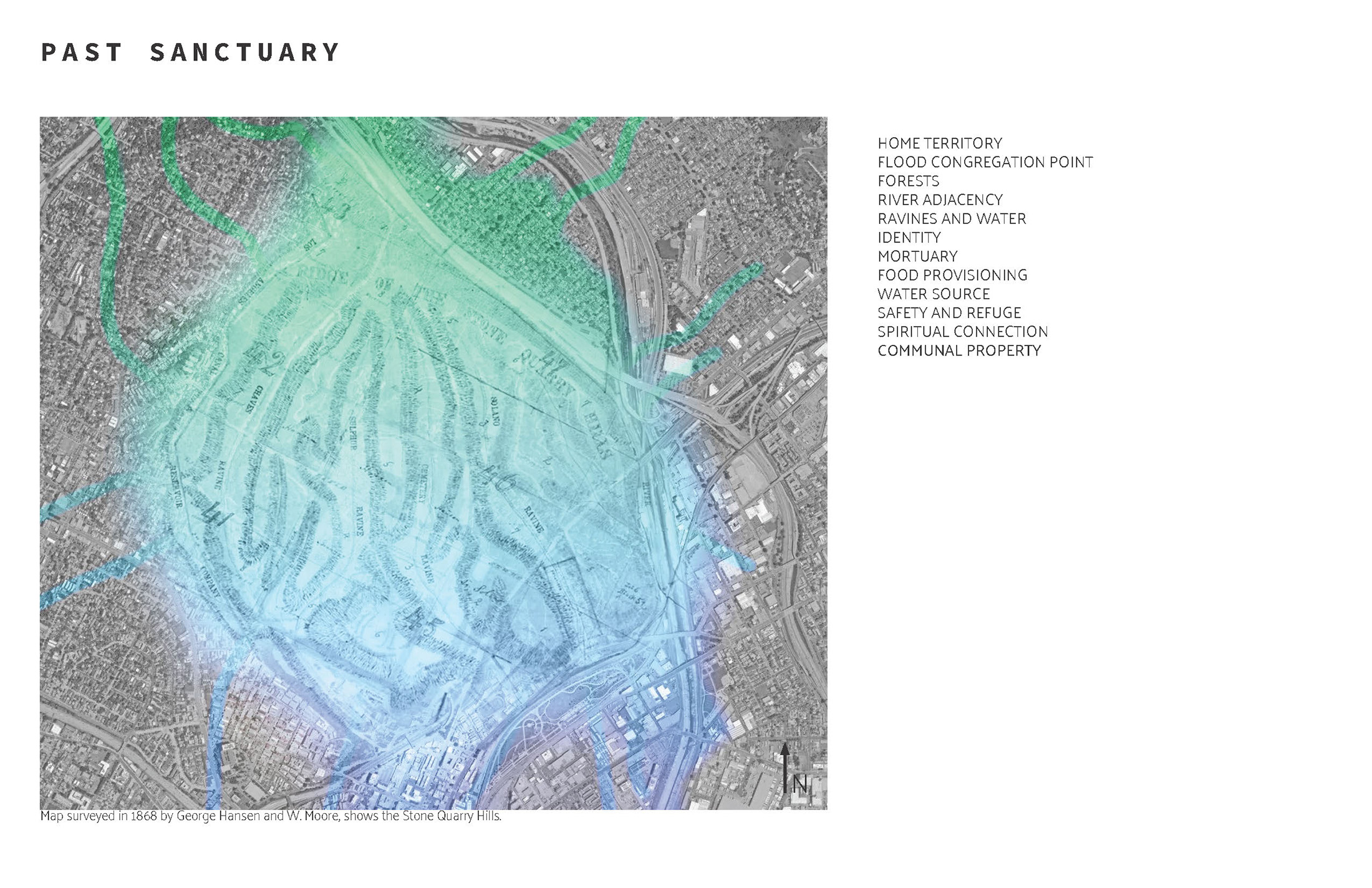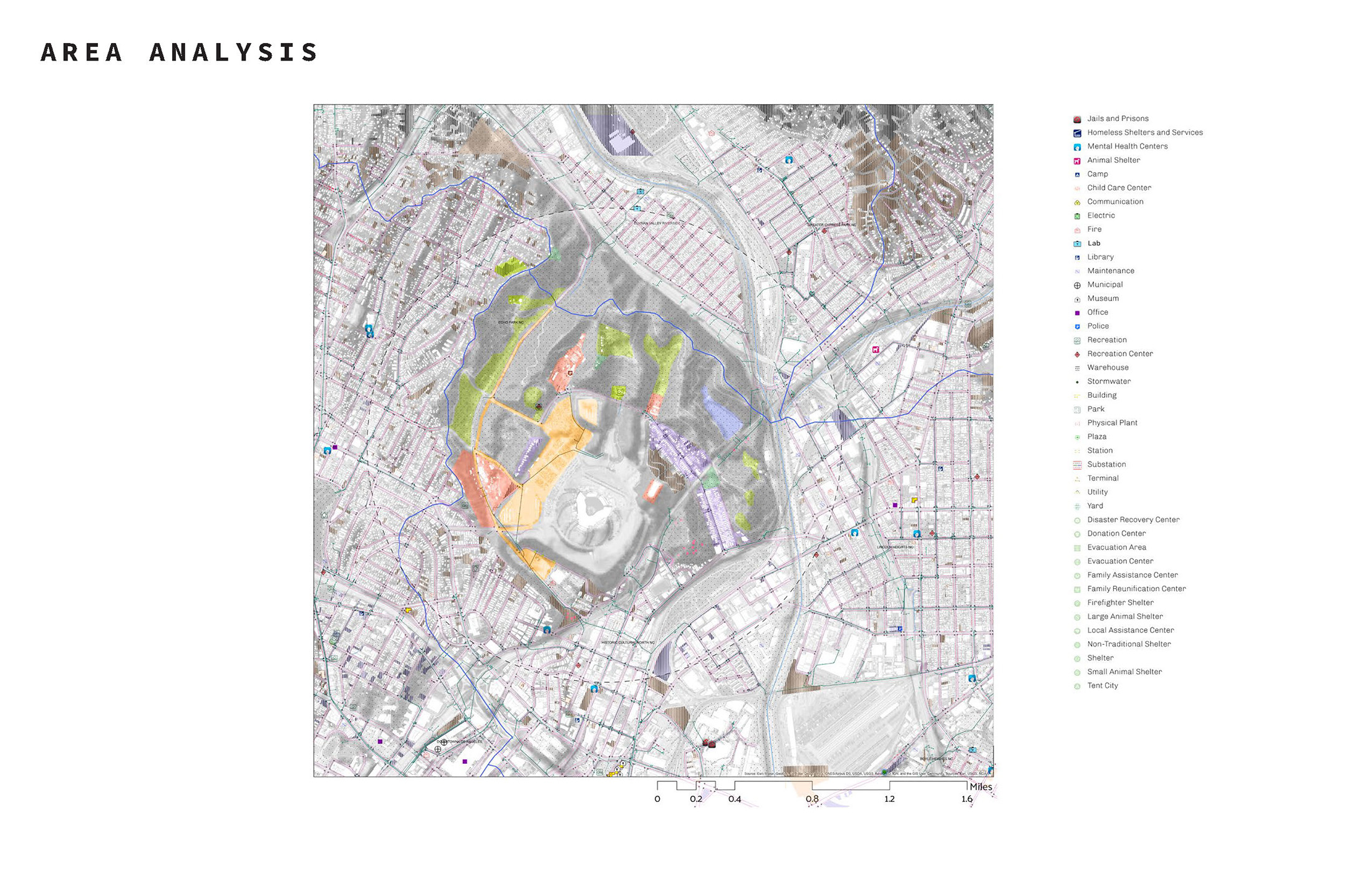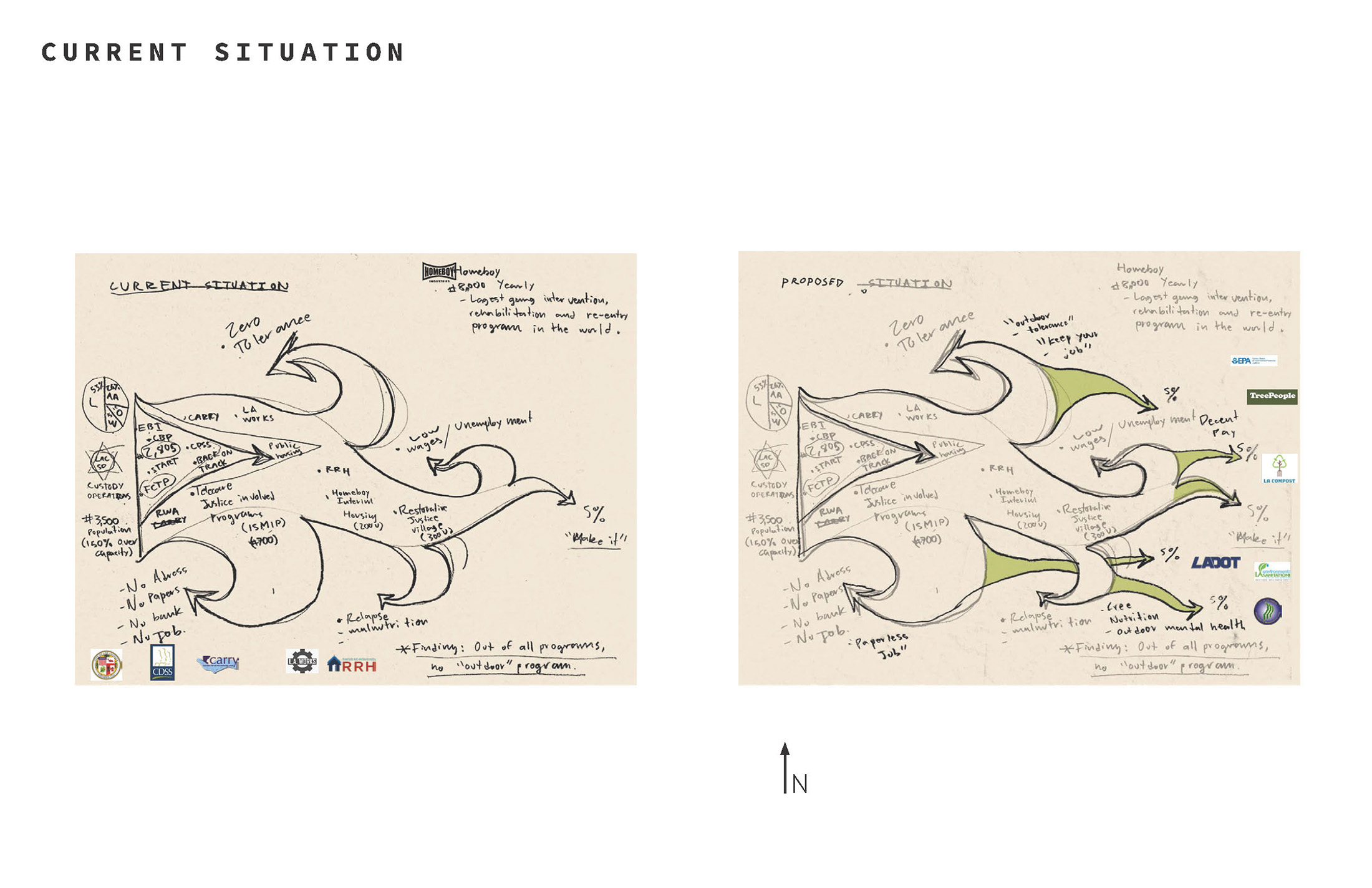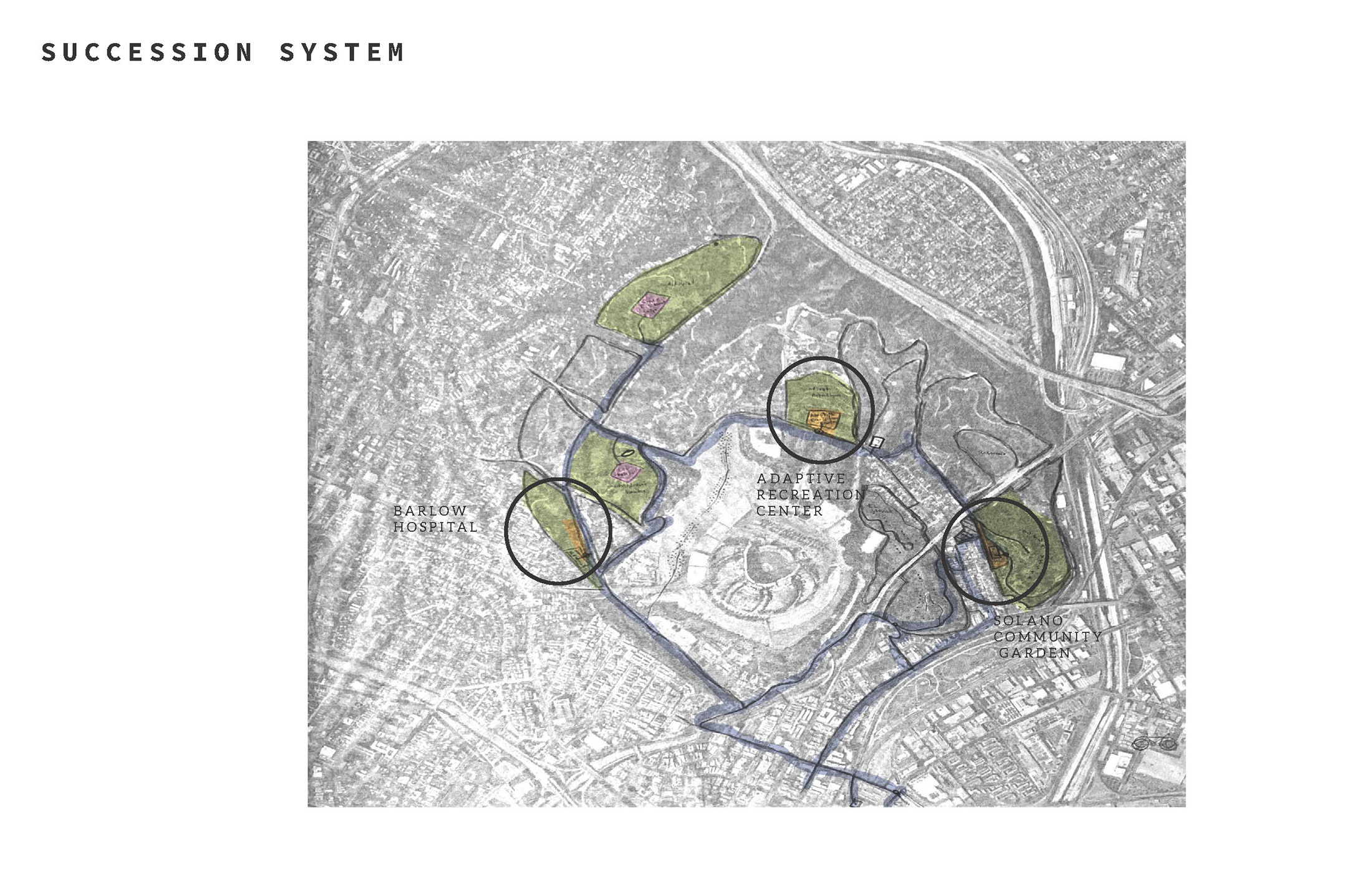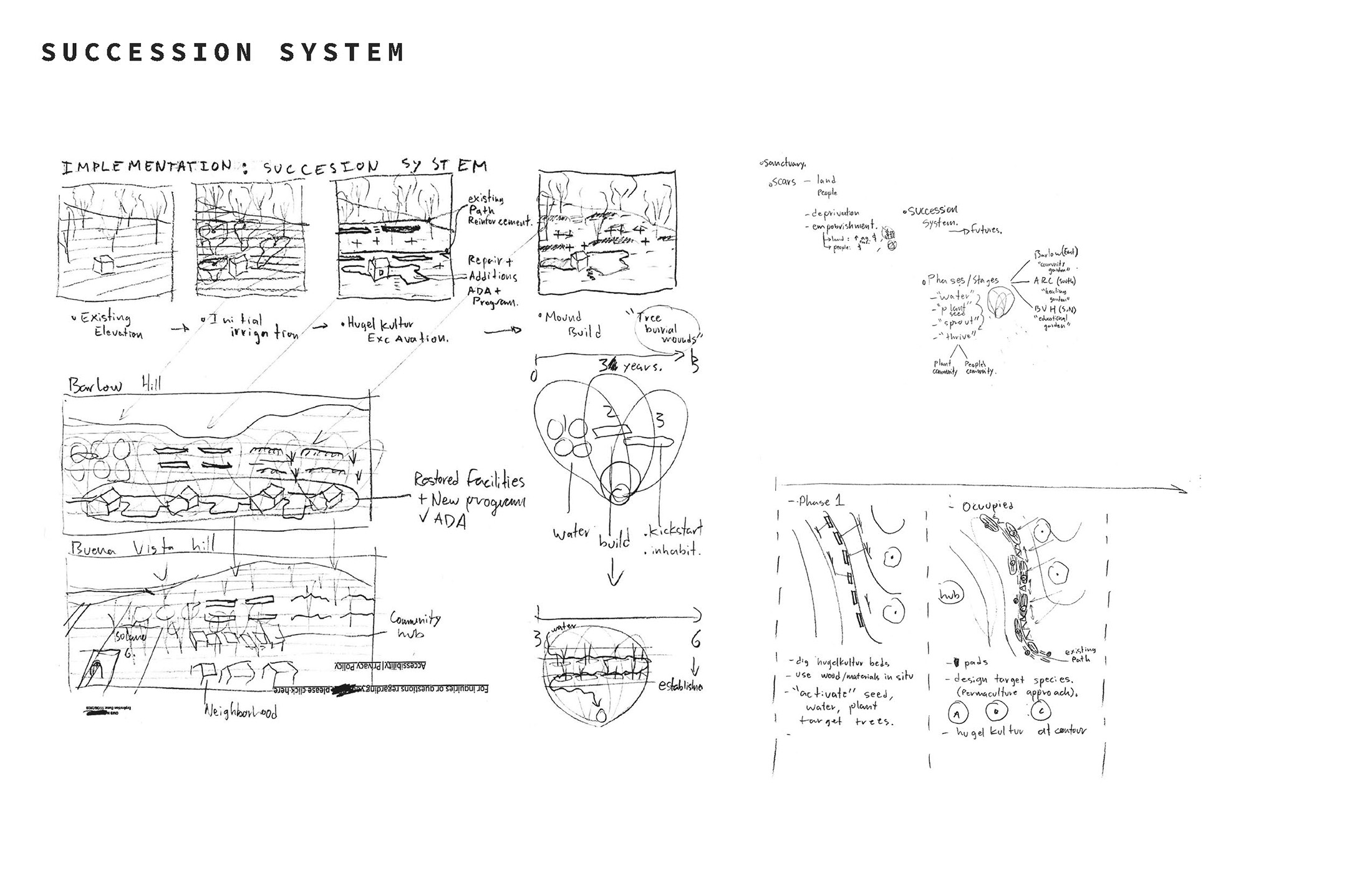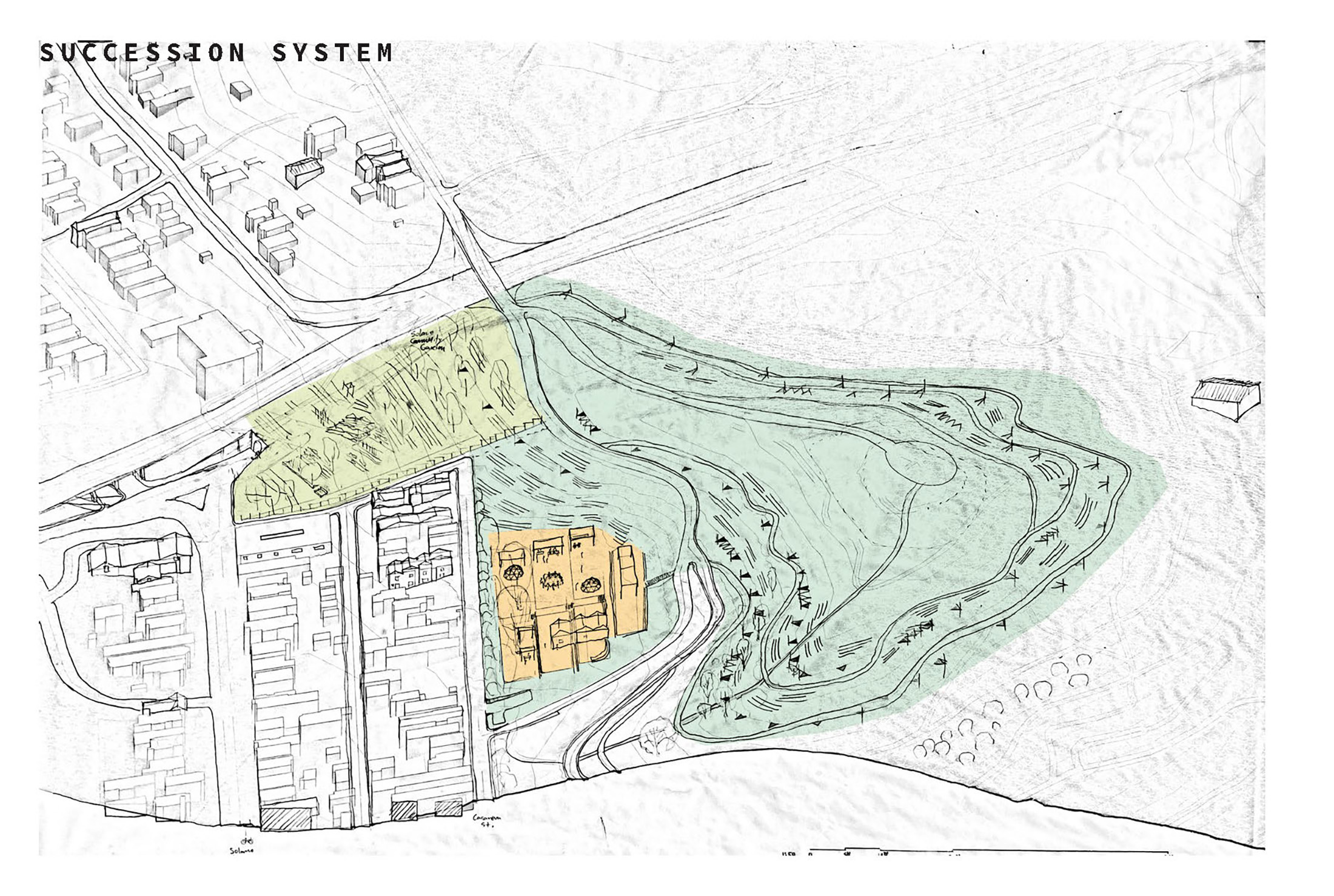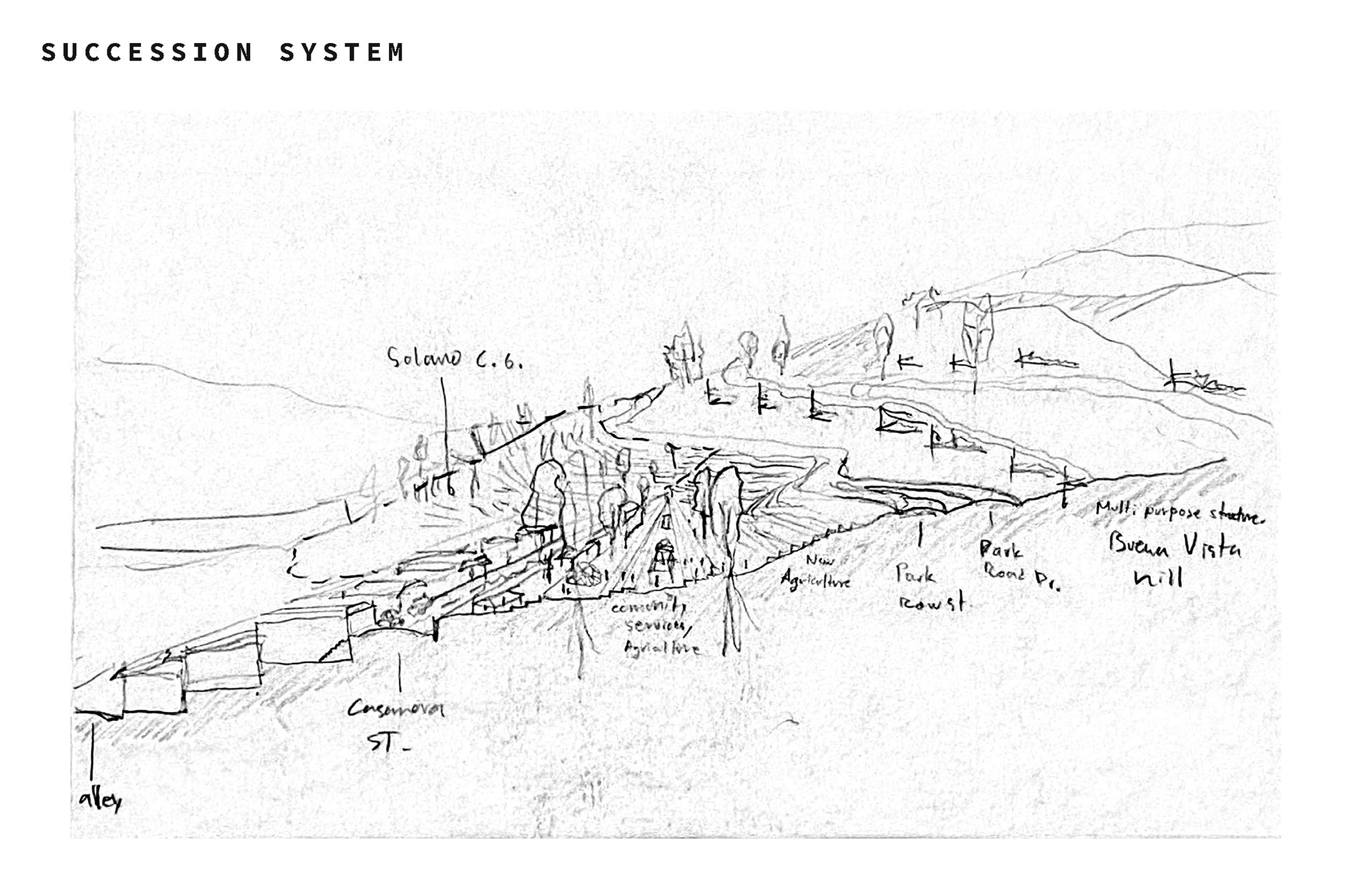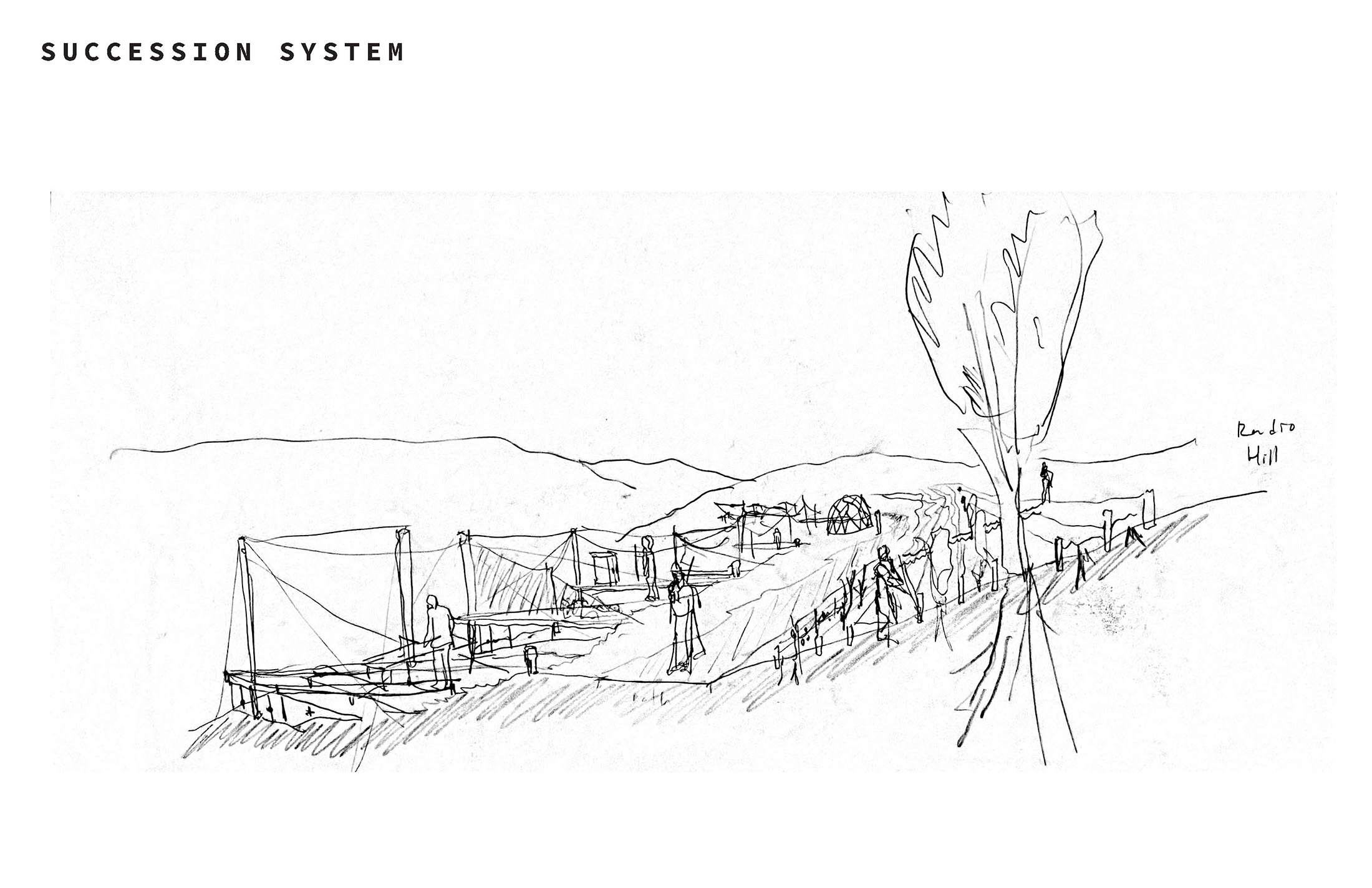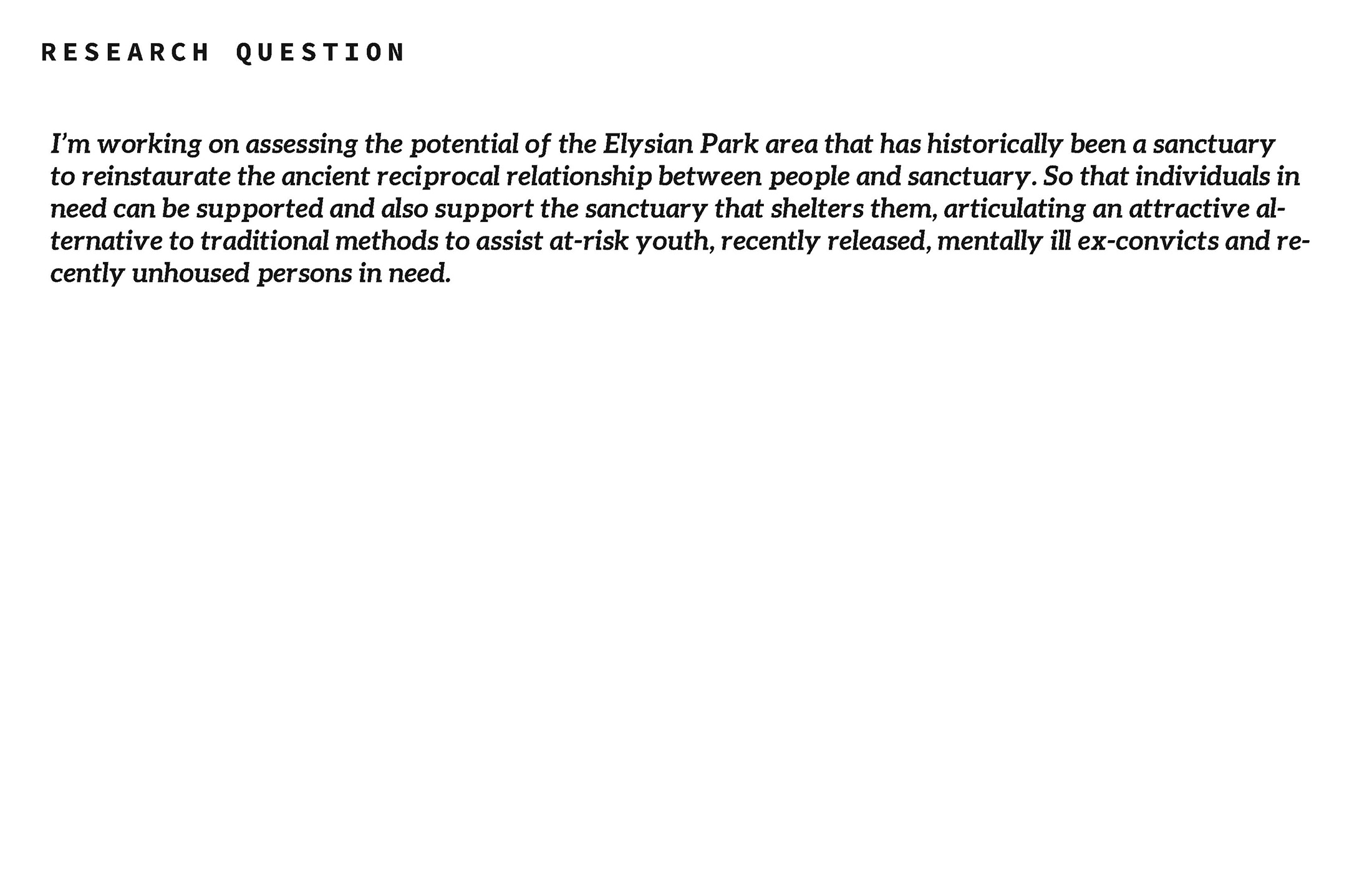Home territory: Past and Present Sanctuary
By Hector Covarrubias del Cueto
Elysian Park, the oldest park in Los Angeles represented a sacred sanctuary for the indigenous communities of the region. In cases of great flooding, people would take refuge there. Its forests were carefully stewarded as they provided shelter, water, and food as well as a place of sacred burial. The relationship between sanctuary and people was reciprocal, for people saw sanctuary as part of themselves, their elders, and their spirits. Then and today this land represents the sanctuary where people in need meet. Beyond the decimation of its ancient forests, the major scars of the site are of topographic and hydrologic nature.
Solano Garden emerged for an area prone to erosion and neglect. It employed at-risk youth, ex-convicts, and unhoused individuals, resulting in lower reincidence and providing opportunities for reinstating the ancient reciprocal relationship with sanctuary. The experience of the Solano Community garden can be taken as the basis to develop new strategies. I’m working on assessing the potential of the Elysian Park area to reinstate the ancient reciprocal relationship between people and sanctuary, that individuals in need can be supported and also support the sanctuary that shelters them, articulating an attractive alternative to existing methods to assist unhoused individuals.

